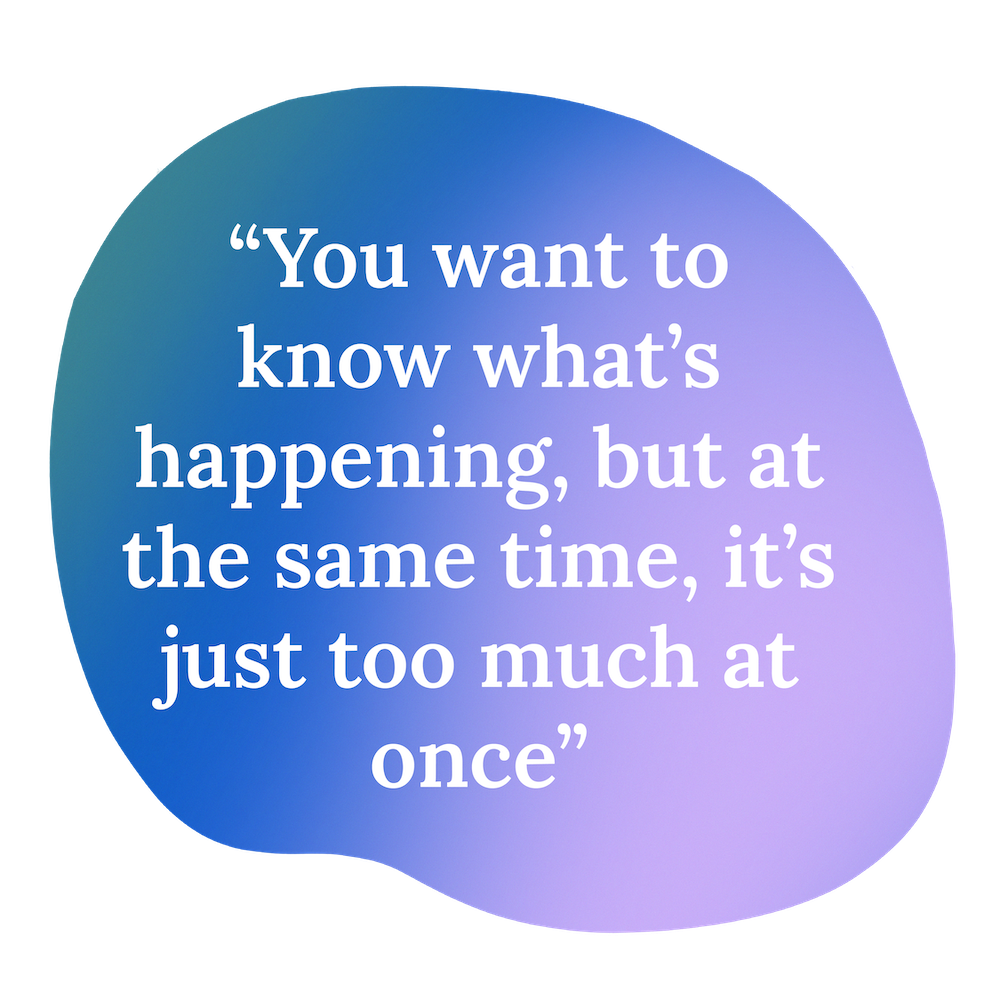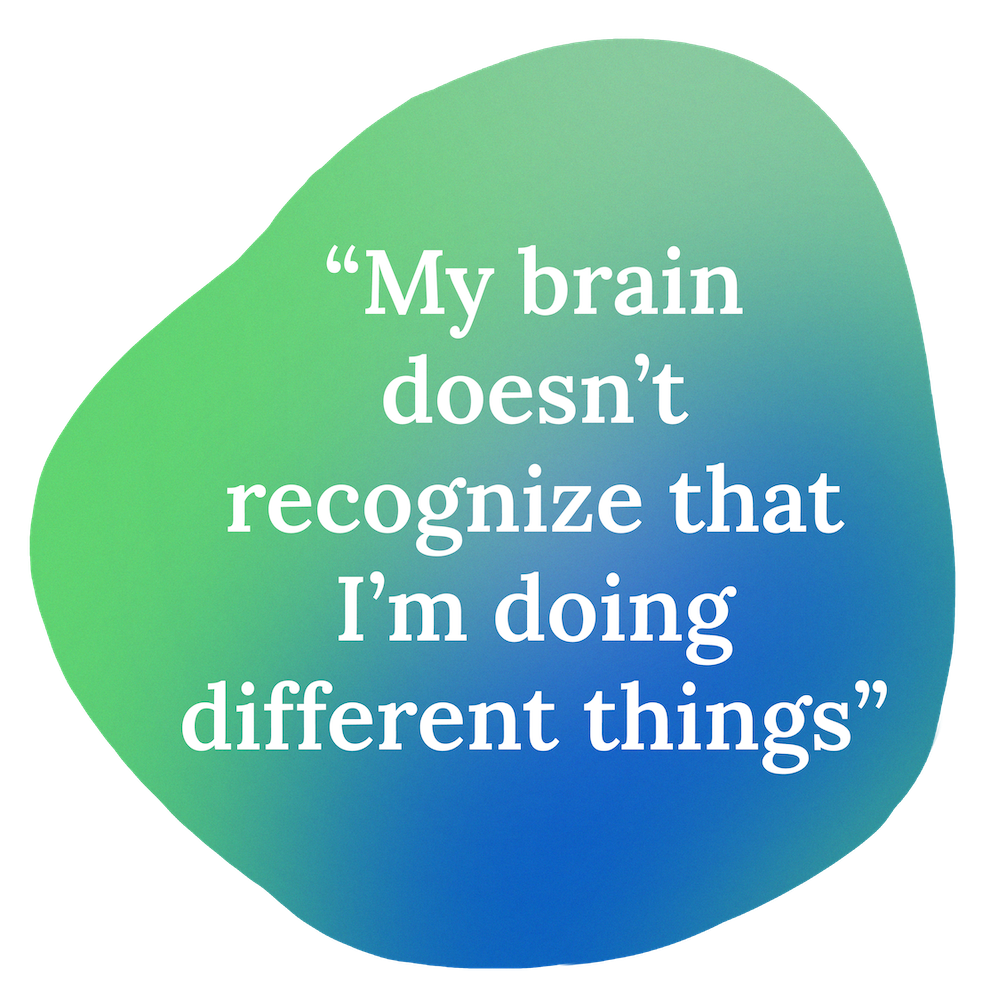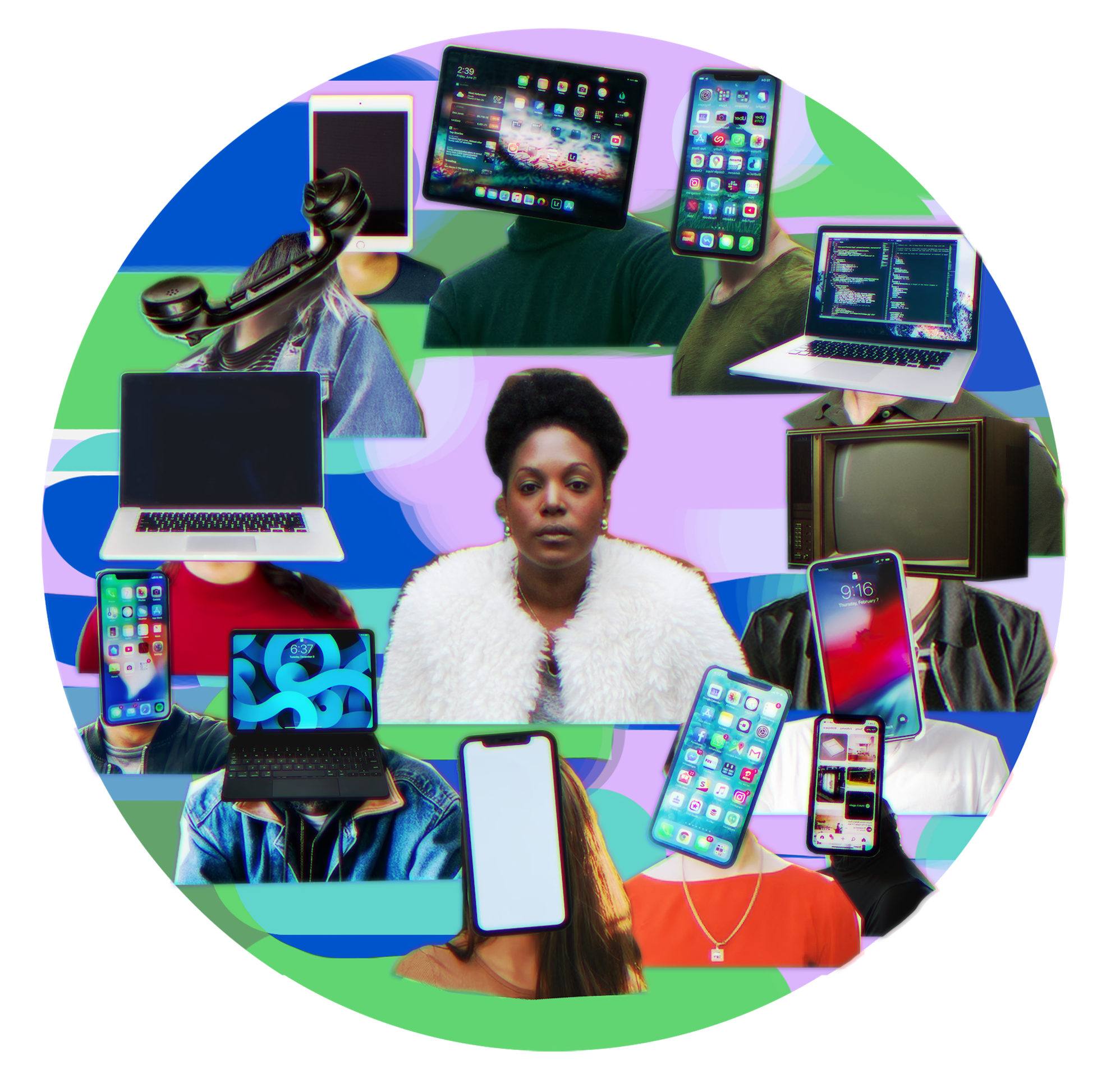The first summer of the pandemic, Jade Smith could barely bring herself to get out of bed. She’d rarely
leave the confines of her room, finding little motivation to even sit at her desk a few feet away. Smith had
just moved back to her hometown of Ottawa from Toronto after Ryerson
closed
its residences to students in March 2020. That year, she completed all her exams surrounded by her blankets
and pillows and while the world self-isolated at home due to COVID-19, Smith isolated herself in her room as
her mental health declined.
Every morning when Smith woke up, she’d open Instagram, check her DMs and sift through people’s stories. The
third-year arts and contemporary studies student would see people post about their own trauma, negative
feelings about the pandemic and life in general or positive posts pretending the world was a perfect place.
She says when people would post about the pandemic, violent world news or their own mental health, it caught
her off guard and made things feel bleak. “It wasn’t good to be around a lot of people talking about how
depressed they are and how they want to not be here anymore when I was in the same space,” she explains. “It
didn’t make me feel like I wasn’t alone, it just made me feel like maybe it’s not worth it.”
At the time, going on social media was a regular routine for Smith, who spent five to six hours per day on
apps like Instagram, to keep up with friends and Twitter, to stay up to date with her favourite K-pop
groups. However, she quickly came to understand this routine was unhealthy. For Smith, who has had chronic
anxiety and depression as well as body dysmorphia and disordered eating from a young age, social media was
extremely consuming and overpowering. “You want to know what’s happening, but at the same time, it’s just
too much at once,” she says. “When you’re already overwhelmed with things, it almost felt like a nuisance
when I had to open up an app.”
What she says was once enjoyable quickly became a great stressor in her life, causing fatigue and
contributing to her poor mental state. Smith would find herself crying constantly and comparing herself to
others online. When she’d see people post positive things about their own lives while she was struggling
with school and her mental health, it lowered her self esteem. “I’m not going to go look at people showing
me that they’re having the time of their lives when I feel like shit, because none of that makes me feel
better,” she says.
After Smith finished her exams last year, she slowly started to wean herself off of social media by deleting
her Twitter and refraining from using Instagram. “I consciously made the decision,” she says. “At one point
I was like, ‘I don’t feel good when I’m on it,’ so I just stopped going on it.”

While the lines between people’s online and offline worlds became increasingly blurred during the pandemic,
that’s always been the reality for Generation Z, who’ve been online their entire lives. As a result, Ryerson
students like Smith say they’re tremendously fatigued from the pressures of maintaining and facilitating an
online presence for their social endeavours. And with school shifting online, there’s virtually no escape
from the internet now, leaving students overwhelmed.
Those born 1994 and later, also known as Gen Z, are the first generation of “social natives,” according to a
2019
study
conducted by Hill Holiday, a marketing research platform based in Southern California.
According to the study, 94 per cent of Gen Z use at least one social media platform and 50 per cent report
that social media blends together with other ways in which they interact with friends and find content.
“It’s impossible to have a conversation about Gen Z without talking about social media,” the study reports.
“For Gen Z, what is happening online and on social media is what is happening in real life.” However, this
online presence can be detrimental. The study reported that 48 per cent of those surveyed say social media
makes them feel sad, anxious or depressed.
Additionally, schools aren’t equipped to create virtual learning environments (VLE) where students can
thrive, even if those schools are virtual in design, according to a 2020
study
published in
Education and Information Technologies. The article reports that students went from
daily face-to-face interactions that built relationships and promoted positive social-emotional skills to
the bare minimum of sending an email a few times a week.

“It cannot be assumed that because students use technology at very high rates for personal relationships and
entertainment that they can directly transfer those skills to...digital literacy necessary and conducive to
learning in a VLE,” the report says.
Makana Chock, a media psychology professor at Syracuse University, says humans are literally coded to have
the need to socialize with others, which makes logging off or deleting social media apps more challenging.
The sudden loss of a social lifeline when you delete social media can cause people to experience distress,
according to Chock. Many functions of the neocortex are devoted to being social and engaging with other
people.
As social media became a primary method of communication during the pandemic, staying off it was also
harder. She explains when people miss out on social media, their bodies experience increased levels of
stress. “It’s not just what’s in [social media], it’s the frequency with which we check it and the perceived
need and expectation to keep going back and popping back in again,” she says.
“One of the main ways we socialize in the contemporary world is via the internet and social media, and
that’s so important these days,” says Smith.
“I’m always so overwhelmed with my own life and everything that’s going on, especially in a pandemic,” she
adds. “But then at the same time, I want to know what’s happening.”

At the beginning of this fall semester, Lina Elsaadi felt like a zombie. She remembers struggling to keep
her eyes open in class and feeling like she hadn’t slept in three days despite having just woken up. The
third-year media production student had preemptively enrolled herself into 12 classes at the time to
increase her chances of potentially having at least one in-person course. However, her generated timetable
forced Elsaadi to sit through three back-to-back Zoom lectures that were each three hours, every Wednesday.
Conflicted with headaches, back pain and the overall feeling of wanting to get up and stretch, Elsaadi says
her Zoom lectures were draining both physically and mentally. For her, powering through back-to-back classes
from 12 p.m. to 9 p.m. felt unreasonable.
“I get up from my computer, it’s 9 p.m. The entire day just went by. I literally do not have time to have a
break.”
Contained in her studio apartment in downtown Toronto, Elsaadi has her office, bedroom, kitchen, dining room
and living room in one area. “You’re in the same space that you’re working, sleeping, living and you’re not
really getting a mental break from it,” she says. “We’re in a 24-hour cycle. We haven’t really escaped our
work, we haven’t really escaped our school.”
The boundary between the online and offline worlds dissolved years ago, according to Ramona Pringle, an
associate professor at the RTA School of Media. “We live in a hybrid reality,” she says, referring to the
interconnectedness of being online and offline. Pringle says within the context of the pandemic, hybridity
has been stressful because workplaces and schools have had to deliver things in multiple ways. But in
general, humans have been working within a hybrid space as the internet gained prominence in the 2000s
because their attention has been split between being in person and online, essentially living in two
different spaces at the same time.
Pringle further explains that due to the lack of distinction between these two worlds, burnout can occur
when students dip too much into one space, for example: being too online. “We’ve never been trained in terms
of how to best live within the reality of the world we live in.” But to an extent, it’s not something
students can really be trained on due to the inherent presence of the internet ingrained into their lives,
she adds.
When it comes to Zoom, Chock explains that the cause of stress and fatigue from meetings happens two-fold.
Firstly, the act of staring at oneself can be stressful, as being aware of how you’re acting can take up a
lot of cognitive energy.
Secondly, Chock says people use their cognitive energy to interpret what other people are doing. The lag
caused by internet speed separates the timing of visual images and auditory elements, which can cause stress
for users trying to process them simultaneously.
Another factor is the position in which users look at the camera. In person, people often look into each
other’s eyes or directly gaze towards their face when they’re speaking, signalling they have their
attention. Zoom offsets face-to-face interaction that people are accustomed to, says Chock. For example, a
computer user would have to look at the webcam on top of their laptop to look as if they’re presenting to
the audience. This creates a disconnect which severs the social aspect of meetings where verbal and visual
cues aren’t picked up, further isolating students and adding stress, Chock mentions.
“This is our bodies telling us: ‘They’re not looking at me, they’re not paying attention to me.’”
Elsaadi says her program is very hands-on, making last year’s transition to online learning difficult, as
she says she didn’t learn much at all.
As a student with attention deficit hyperactivity disorder, her specific learning style involves being in an
academic environment—a separate space away from where she rests and eats. “Online [learning] is completely a
waste for me,” Elsaadi says. “Being in-person is a very important thing for my health, my mood...for me to
actually learn and benefit from my education.”
Even during breaks in class, Elsaadi says she still finds herself passively scrolling through social media,
mindlessly tapping through people’s stories on Instagram.
She says she often sees people post “highlight reels” of their lives or only publicize the good parts. This
negatively impacts Elsaadi’s mental health, as she finds herself comparing her life to their polished ones.
“When you’re coming back from a long day of school and you’re tired, your brain is not functioning in a way
that can filter those things,” Elsaadi says. “When you’re tired and you’re sad, you’re seeing somebody
living the life you want, that’s going to affect you.”

Everyday, Gabriella Yabiku sets her laptop down on her desk, ready to join her business classes—but sleep is
always at the back of her mind. The third-year business management student joins class every day to score
the participation marks she needs for her grades, but as her classes continue, she’s always just looking
forward to going back to sleep.
This habit especially worsened during the second semester of her second year when she could “barely do
anything,” knowing that she could easily switch from listening to her lectures online to entertaining
herself on the internet instead.
Yabiku says the way her studio apartment in Toronto is designed doesn’t allow for her to separate her living
and study spaces. “It’s kind of distracting because your bed’s right there,” she says. “You can just go lay
down and watch lectures in your bed or never watch.”
Without ownership of a standalone TV, Yabiku also uses her computer for watching TV shows, further splitting
her attention from school when she’s fully aware that
Hospital Playlist, a Korean drama she’s
watching, is only a couple clicks away. “My brain doesn’t recognize that I’m doing different things,” she
says. “Am I having fun or am I working?” Yabiku asks herself.
The crossover between work and entertainment eventually led her to feel burnt out; it was taxing to focus on
school amidst all these distractions. As the diversion took away her energy to focus, she says she was
“barely surviving” and “barely waking up” during the lockdowns that started in November last year.
A student’s laptop opens millions of doors to millions of worlds, according to Pringle, which in turn causes
a lot of distractions. She explains that when a student is physically sitting in a classroom, they want
their professor to be interesting because they are facing them in-person. Whereas taking classes alone in
your studio apartment, “you almost don’t have as much of a strong desire for the people around you to be
interesting, because there’s so many other interesting things,” she says.

Additionally, Pringle explains that with all of the consumable content available on the internet, it starts
to confuse the brain and incite exhaustion because “there isn’t a hierarchy of what’s interesting.” The
brain has difficulty deciphering what’s more important since professors, classmates and the entire internet
are all just one click away.
As disconnected as Yabiku feels from her classes, she extends the same sentiment to how she perceives the
way her peers portray themselves on social media. She says the friends she’s made in her program would post
announcements on Facebook and LinkedIn, sharing that they’re doing work for a student association or a job
they recently acquired.
This makes Yabiku feel isolated from them, often laying in bed comparing herself to her classmates—too
exhausted to be involved in extracurricular activities herself.
She says business students in her program are keen to be involved in all aspects of social and professional
life, especially in student groups, in an effort to build professional and social networks. “I felt bad
because I was doing half of what they were doing,” she says. At the time, she was barely passing her classes
and had difficulty waking up every morning. “I compared myself a lot. It was really hard because of that,”
she says.
Pringle explains that although people don’t mean to, they’re naturally drawn to consuming and posting
content about the “good life,” adding that people’s perceptions of others have been manipulated since before
the pandemic as aspiration does well on social media. According to a 2015
study
published in
PeerJ Computer Science, positive content is more likely to be shared and favoured than
negative content.
This makes it easy for people to live vicariously through accounts they follow on social media. “It’s almost
as if by watching it, we don’t need to do it,” she says. “We’re drawn to the better version of things.”
However, Pringle adds that there will come a tipping point where simply scrolling through social media will
cause frustration, especially when people are confined to their houses. She cites
instances
where celebrities would post pictures of themselves travelling internationally while others stayed at home
during the pandemic.
“It always is just this mismatch from what you’re experiencing, or what reality is and then what you’re
witnessing and it just doesn’t make sense.”

Today, Smith uses social media very scarcely. She hasn’t redownloaded Twitter and only uses Instagram
casually to communicate with people through direct messaging. She’s come to understand that she can control
how she uses the apps.
“Social media isn’t inherently good or bad to begin with, it’s just how we use it,” Smith explains. “I think
people forget we do have a certain level of power in what we see.” This has been a huge “game changer” in
her life, now removing followers, muting or unfollowing people that post content she doesn’t want to see.
Instead of being online, Smith now cherishes the time she spends with her coworkers at Second Cup on the
University of Ottawa’s campus, where she works as a barista. She’s become best friends with a few of her
coworkers, having fun together when they work shifts. “While I’m working with them, I don’t think about
[school],” she says. “I’m working, but I’m mostly just hanging out with friends. That’s what it feels like.”
She’ll often get to the cafe early and sit at a table with her laptop out doing work before the start of her
shift. During this time, she basks in the atmosphere of customers trickling in and out and lively
conversations between coworkers. This in-person interaction alleviates some of the stress and allows Smith
to stay offline and make in-person connections, which has done wonders for her mental health.
In a recent conversation with her doctor, Smith told her that she’s had more periods of low moods than she’s
had positive experiences throughout the pandemic. However, Smith also says learning to be self-aware, after
taking time for herself and away from social media, has helped her recognize the harm in being chronically
online.
“I’ve grown the most I ever have in my life in the last two years.”



 “It cannot be assumed that because students use technology at very high rates for personal relationships and
entertainment that they can directly transfer those skills to...digital literacy necessary and conducive to
learning in a VLE,” the report says.
“It cannot be assumed that because students use technology at very high rates for personal relationships and
entertainment that they can directly transfer those skills to...digital literacy necessary and conducive to
learning in a VLE,” the report says.


 Additionally, Pringle explains that with all of the consumable content available on the internet, it starts
to confuse the brain and incite exhaustion because “there isn’t a hierarchy of what’s interesting.” The
brain has difficulty deciphering what’s more important since professors, classmates and the entire internet
are all just one click away.
Additionally, Pringle explains that with all of the consumable content available on the internet, it starts
to confuse the brain and incite exhaustion because “there isn’t a hierarchy of what’s interesting.” The
brain has difficulty deciphering what’s more important since professors, classmates and the entire internet
are all just one click away.
